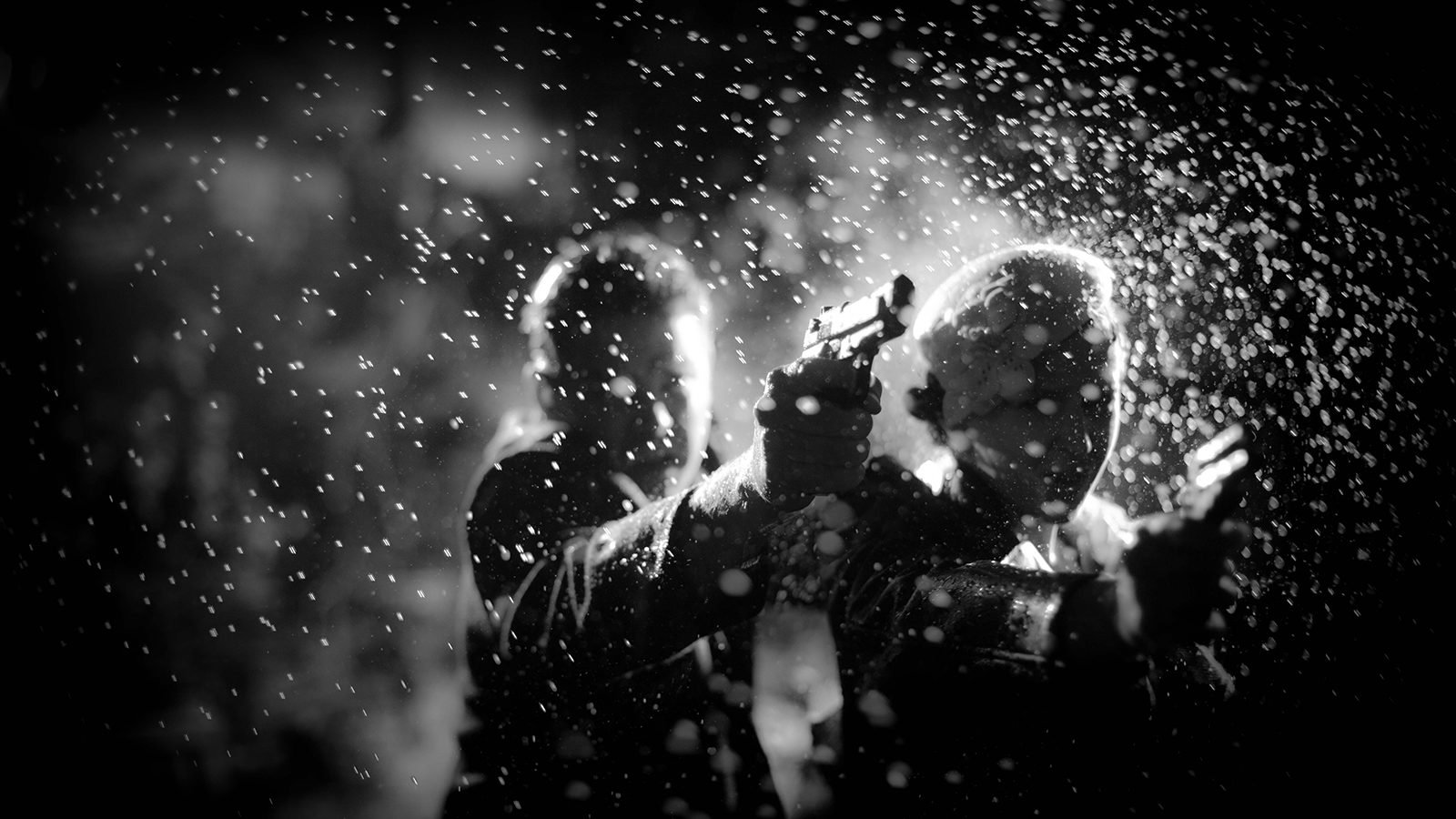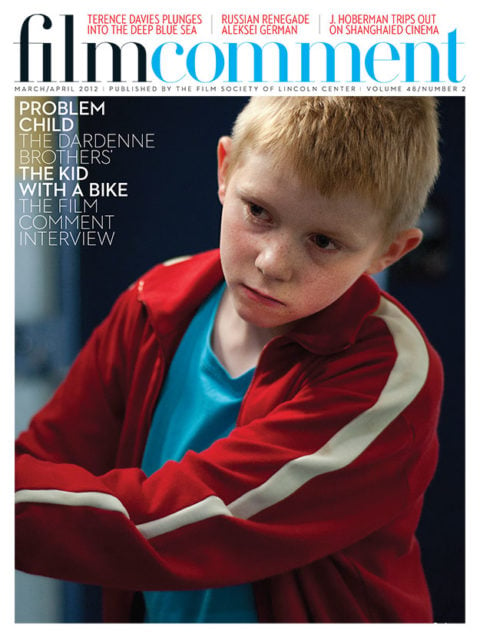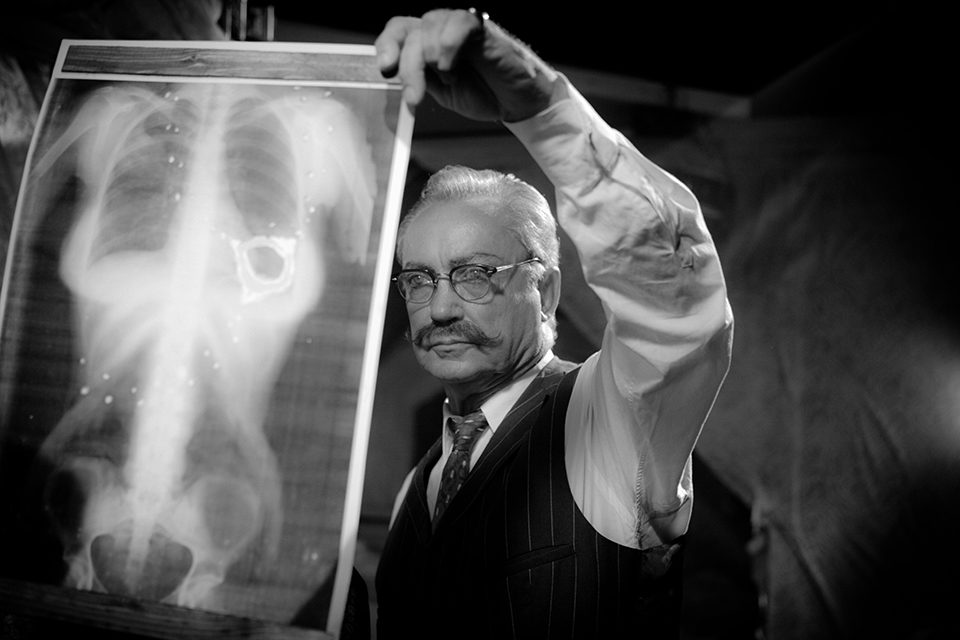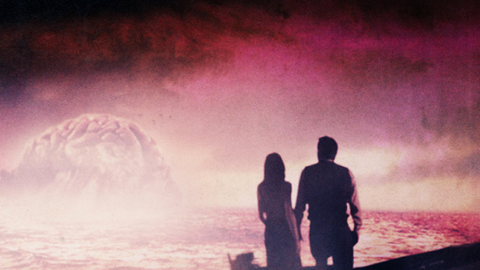By Geoffrey O’Brien in the March-April 2012 Issue

Review: Keyhole
(Guy Maddin, Canada, 2011)
Antiquarian pastiche is the language of the unconscious, at least in the movies of Guy Maddin. Burrowing into the archaeology of cinematic forms he uncovers pathways into otherwise inexpressible stretches of dream territory, thereby transforming the suppressed inner agonies of childhood and adolescence into a type of toy theater unique to him. In this wondrous screening room the forbidden is reborn as ecstatic display, comic and horrific in equal measure. The past returns wearing its obsolescent textures and trappings as marks of occult celebration—a past not restored (given the nightmarish family dramas at the core of Maddin’s films, that would be a prospect too terrible to contemplate) but radically transformed into a domain of time neither past nor present. It’s otherwise known as cinema, a zone where every disaster can be repeated, in any order and any combination, without any harm being done. In Brand Upon the Brain! (06) or My Winnipeg (07) the intolerable oppressiveness of the past is re-created in a mood of ludicrous freedom.

From the March-April 2012 Issue
Also in this issue
Keyhole situates itself in the heart of that unconscious where all events are simultaneous and death is never more than a distant rumor. There is less distancing here; the sense of constant and overwhelming incongruity is less comic than mournfully unsettling. We are in some kind of horror movie, or a mash-up of horror movies, as if Carnival of Souls, The Exterminating Angel, A Page of Madness, Castle of Blood, The Invisible Ray, Vampyr, and assorted episodes of The Whistler had all been thrown in the blender. Everything here—dissolves, blurs, superimpositions, harsh lighting contrasts, along with the B-movie poetry of Maddin and George Toles’s screenplay—says to be afraid. Everything is a cue calculated to terrify an unwary 3-year-old. The action is nominally centered on some gangsters holed up with their hostages in a house under siege. The living are to be separated from the dead, but one way or another they’re all dead, ghost outlaws holding ghost hostages and themselves held hostage by the house’s resident ghosts, a maid eternally down on her hands and knees scrubbing the floor, a naked old man shackled to a bed (Louis Negin) who also provides a constant voiceover wail of fragmentary revelations.

The hero (Jason Patric), the lead gangster, comes in carrying a drowned girl over his shoulders. “I can’t hear my own thoughts,” she confides. Small wonder, given the machine-gun fire and howls and clanking of chains and ceaseless misterioso music. Patric’s gangster is named Ulysses and we are free to imagine some free-form version of The Odyssey, in which the hero’s long voyage home is reduced to the prolonged attempt to get from the entryway to an upstairs bedroom where his wife (Isabella Rossellini) awaits him. But that would suggest a narrative logic that instead is constantly undermined by multiple story lines involving dead children, lost children, obscure betrayals and unhealed grief, a boy stung to death by bees, and in the midst of it all an obsessive interior decorator carrying out an ambitious renovation project.
We are in a dream sequence—a hallucinatory episode out of Stranger on the Third Floor or Fear in the Night—from which, this time, there is no awakening. The imperatives and surprises of the dream state are precisely rendered, as we helplessly retrace psychic spaces richly furnished with keys and keyholes, knives and old phone books, genitals actual or fabricated, a stuffed wolverine, a bicycle-powered electric chair, and sexy underwear elaborately decorated with pornographic line drawings—a gothic rummage sale. It’s all part of a troubled mission to recover what was lost, put every household object back where it once belonged, restore a picture of family happiness that for one haunted moment coalesces before dissolving back into Keyhole’s anguished Walpurgisnacht. In the words of that shackled ghost: “The happiness the house has known is free to vanish the moment its inhabitants leave; but sorrow, sorrow must linger.”




